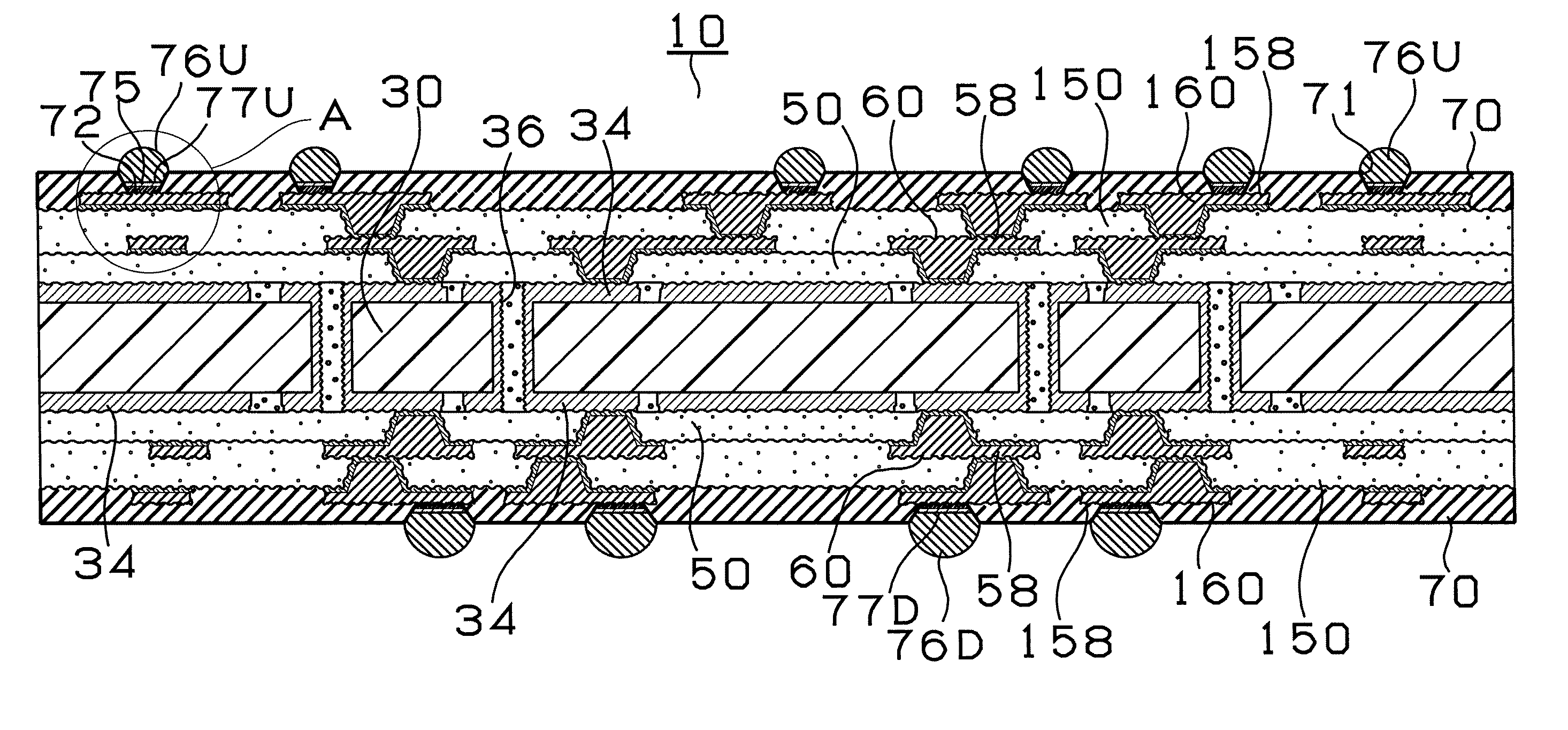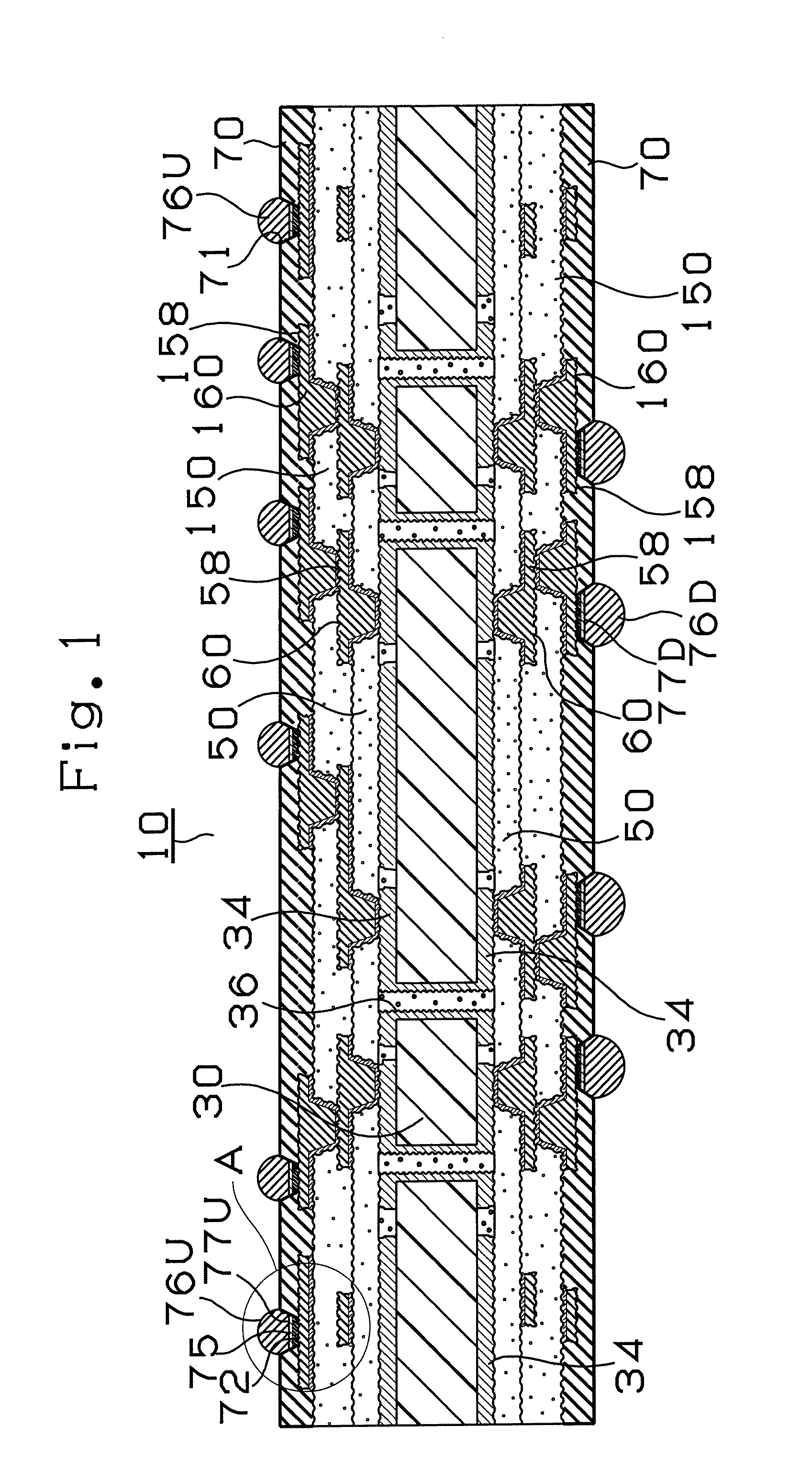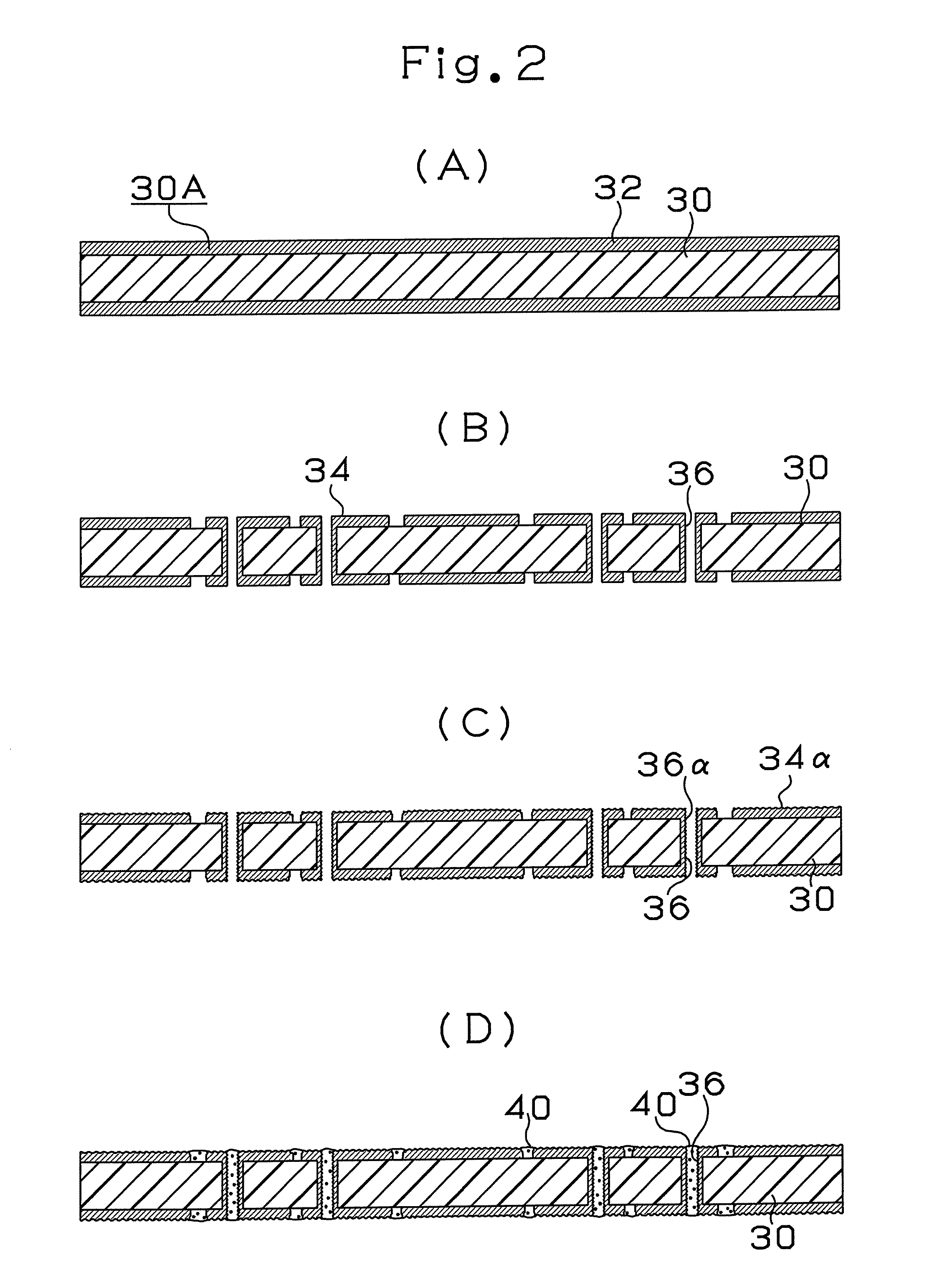Method for manufacturing printed wiring board
- Summary
- Abstract
- Description
- Claims
- Application Information
AI Technical Summary
Benefits of technology
Problems solved by technology
Method used
Image
Examples
embodiment 1
[0216]The configuration of a multilayer printed wiring board 10 according to Embodiment 1 of the present invention will first be described with reference to FIG. 1 showing the cross section thereof. The multilayer printed wiring board 10 has a conductor circuit 34 formed on the front surface of a core substrate 30. The front and rear surfaces of the core substrate 30 are connected to each other via through holes 36. In addition, an interlayer resin insulating layer 50 on which via holes 60 and conductor circuits 58 are formed and an interlayer resin insulating layer 150 on which via holes 160 and conductor circuits 158 are formed are provided on the both surfaces of the core substrate 30. Solder resist layers 70 are formed on upper layers of the via holes 160 and the conductor circuits 158, and solder pads 77U and 77D are formed on the conductor circuits 158 through the opening portions 71 of the solder resist layers 70, respectively. Bumps 76U and 76D are formed on the solder pads ...
embodiment 1-1-1
[0261]In embodiment 1-1-1, an alloy of Cu: 0.5 wt %, Ag: 3.5 wt %, Sn: 95 wt % is used as a solder consisting of the solder bump. Ni layer is formed as thickness 5 μm, P content 1.2 wt %. On the other hand, Pd layer is formed as thickness 0.5 μm, P content 5 wt %. Therefore, the composition of the Ni—Sn alloy layer becomes Sn:Cu:Ni=42:37:21, the thickness becomes 1.5 μm. Electron microscope pictures of Ni layer, Cu—Ni—Sn alloy and solder in embodiment 1-1-1 are shown in FIGS. 15-18. The electron microscope picture (×20 k) in the left side of FIG. 15 shows embodiment 1-1-1. The electron microscope pictures (×100 k) in the left sides of FIGS. 16, 17 are a more enlarged scale. The right sides of electron microscope pictures in FIGS. 15, 16, 17 show Pd layers which do not contain P in reference example 1-1-1. The lower side is the Ni layer and the upper side is the solder and the interface between the Ni layer and the solder is the Cu—Ni—Sn alloy. As shown in the electron microscope pic...
embodiment 1-1-2
[0262]In embodiment 1-1-2, an alloy of Cu: 0.5 wt %, Ag: 3.5 wt %, Sn: 95 wt % is used as a solder consisting of the solder bump. Ni layer is formed as thickness 5 μm, P content 1.2 wt %. On the other hand, Pd layer is formed as thickness 0.01 μm, P content 2 wt %. Therefore, the composition of the Ni—Sn alloy layer becomes Sn:Cu:Ni=42:37:21, the thickness becomes 1.8 μm. The Ni—Sn alloy layer is typically a board-shaped form.
PUM
| Property | Measurement | Unit |
|---|---|---|
| Thickness | aaaaa | aaaaa |
| Thickness | aaaaa | aaaaa |
| Thickness | aaaaa | aaaaa |
Abstract
Description
Claims
Application Information
 Login to View More
Login to View More - R&D
- Intellectual Property
- Life Sciences
- Materials
- Tech Scout
- Unparalleled Data Quality
- Higher Quality Content
- 60% Fewer Hallucinations
Browse by: Latest US Patents, China's latest patents, Technical Efficacy Thesaurus, Application Domain, Technology Topic, Popular Technical Reports.
© 2025 PatSnap. All rights reserved.Legal|Privacy policy|Modern Slavery Act Transparency Statement|Sitemap|About US| Contact US: help@patsnap.com



